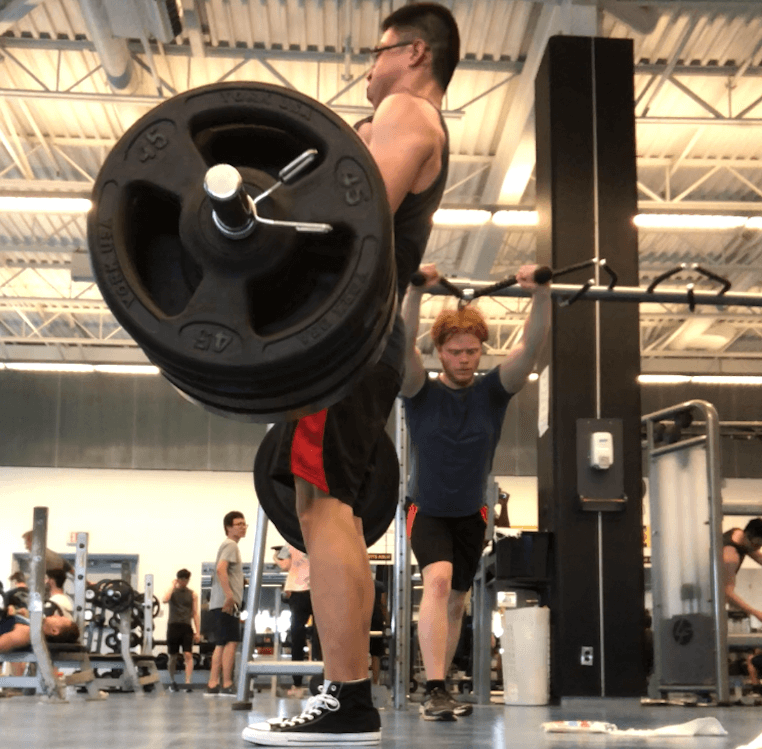Lessons Learned from Powerlifting
I’ve been lifting for 1.5 years now, and it’s become one of the best investments in my life. In this blog post, I’ll share the 9 most important lessons that I learned.

I previously wrote a blog post about my gym journey. What I’ve come to realize was that my biggest transformation wasn’t physical, but rather mental.
1. Mental confidence.
If I don’t believe I can lift a weight, then I probably can’t lift it. Before I attempt my heavy lifts, I always try to visualize myself doing the set and replaying that picture in my head. I’ve been able to transfer this skill into many other aspects of my life, where I try to mentally visualize success.
When I first started lifting, I had a bunch of thoughts in my head that might sound familiar to all gym goers. “I don’t know how to lift. I’m scared. I’m so weak. People are going to judge me.” Now that I’ve conquered this fear with lifting, I’ve become less scared to try new things. For example, I’ve always been terrified of dancing, but last week I tried salsa dancing for the first time. I didn’t care what people thought about me and I had a great time at the event.
Here’s my favourite quote about lifting:
That weight when squatting isn’t pressure. It’s adversity. Remember that feeling. Hold it, picture it, grasp it, bottle it. That fear is you pushing yourself way you of your comfort zone. You’ll get that same fear doing anything worth doing. Anything that’s intimidating and challenging. When you squat you are transcending your adversity and fears. The weight is all of your doubts and fear manifested into a barbell and some weights. When you squat, you’re praying. For the strength and willpower the transcend your limits, for the ability to rise and get back up.
2. Think long-term.
When I squatted for the first time, I was whobbly with the 45lb bar. Now, I can squat 315lbs for 5 reps. During this journey, there were times where I was lifting with my ego, and tried to go for unnecessary short-term personal records. This sometimes resulted in stalling, or even injuries. With an injury, your one month of good progress might suddenly become two months backwards in progress.
While I still do celebrate small short-term victories every now and then, it’s the long-term mentality that I value the most. Assuming a steady and injury-free progress, I’ll be a heck lot stronger in a year from now than I am today.
3. Time management.
I spend about 10 hours a week lifting and commuting to and from the gym. Although it’s a large time investment, I’ve actually gained more productive time by being better at managing my time. I usually go to the gym in the mornings, so this forces me to sleep early and wake up early. During busy weeks, I make sure I focus on getting my work done, so I never have to skip a gym day.
4. Progress is non-linear.
In my first few months, I experienced the phenomenon called ‘beginner gains’, where I went up 5 lbs on my lifts every workout. Gaining strength is a lot harder to come by now.
In terms of my physical appearance, it changed quite a bit month-over-month in the first 9 months. After that phase, monthly changes were less noticeable. For anyone that wants to get started with lifting, the good news is that you can achieve a great physical transformation in under a year.
Over a 10-20 year scale, I believe strength progress should be logarithmic.

5. Train smart, not hard.
Strength progress is not directly proportional to the amount of effort you spend training. You should come prepared with a plan that includes progressive overloading, and sick to the plan. Don’t be that person who goes to the gym, does random lifts, and makes no progress over months.
I’ve also learned that more days of training doesn’t necessarily result in better progress than less days of training, i.e. 6 days vs 4 days. It’s possible to overtrain, which negatively affects your progress by not getting enough rest.
6. Focus on one thing.
“I want to gain strength, be lean, and build muscle.” While it’s not impossible to achieve that statement, it’s definitely very difficult to achieve naturally. Instead of trying to achieve everything, I would recommend to just stick with one thing. For months, I was running a program that promoted both powerlifting and bodybuilding. Though I did get a bit of strength, and some size, I felt like it wasn’t ideal for progress overall. After I switched to a program that focused exclusively on strength, I increased my squat by 45lbs in 10 weeks.

7. Lifting is only 20% of the work.
The remaining 80% comes from proper dieting, staying consistent, getting enough rest, and training smart. If you lift and don’t eat well, you won’t get great progress. If you’re trying to lose weight and don’t change your eating habits, you won’t get far.
Abs are made in the kitchen, not the gym.
8. Social environment.
By design, the gym is a community of people that share similar interests. It’s a great way to make friends. If you’re ever looking to make new friends or bond with existing friends, the gym is an awesome place to go to.

9. Be obsessed.
This lesson doesn’t apply to everyone. Since discovering powerlifting, I’ve become obsessed with it. I want to constantly improve myself in all aspects. I record my workout videos, and watch them to see where I can improve my form. I preach lifting to my friends and co-workers. I’ve written two blog posts about lifting. You get the point. Whether this obsession is positive or negative, I’m genuinely happy to have discovered something that makes me so passionate. 😄